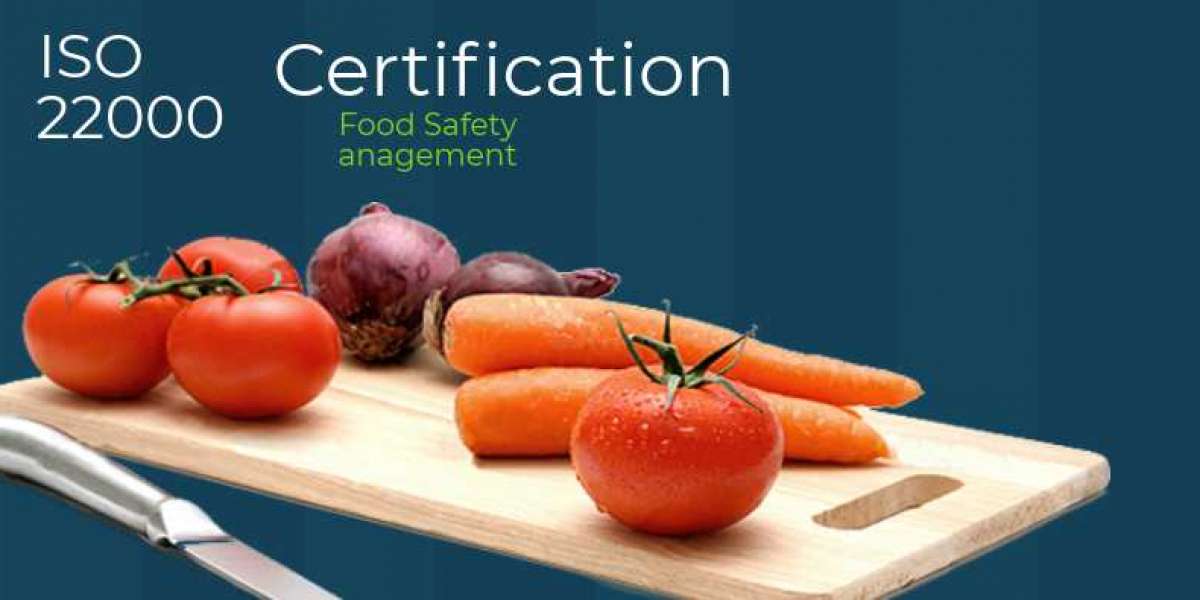Table of Contents
- What is ISO 22000 Food Safety?
- Why Food Safety Matters in Today’s World
- Key Components of ISO 22000
- Benefits of Implementing ISO 22000
- ISO 22000 vs Other Food Safety Standards
- How to Get ISO 22000 Certified
- Challenges and Best Practices
- Final Thoughts
- FAQs
What is ISO 22000 Food Safety?
ISO 22000 is an international standard for food safety management systems (FSMS). Developed by the International Organization for Standardization (ISO), it sets out guidelines for managing food safety hazards throughout the supply chain—from farm to fork.
The standard blends the principles of Hazard Analysis and Critical Control Points (HACCP) with ISO’s management system structure, making it suitable for businesses of all sizes.
Why Food Safety Matters in Today’s World
Think about it: one contaminated ingredient can lead to a global recall, damage brand reputation, and risk public health. In a world of complex supply chains, food safety is no longer optional—it’s essential.
Here’s why:
- Consumer Trust: People want to know the food they eat is safe.
- Legal Compliance: Regulations are stricter than ever.
- Global Trade: ISO 22000 is often a passport for international markets.
Key Components of ISO 22000
1. Food Safety Policy
A clear statement of your commitment to food safety, communicated across your organization.
2. Hazard Analysis
Identifying risks such as biological, chemical, or physical contaminants.
3. Operational Prerequisites
Basic hygiene and good manufacturing practices (GMP) to keep hazards under control.
4. HACCP Principles
Critical control points (CCPs) for monitoring and controlling risks.
5. Continuous Improvement
Regular audits, reviews, and updates to the FSMS for ongoing effectiveness.
Benefits of Implementing ISO 22000
Why should you care about ISO 22000? Here are the top benefits:
- Enhanced Food Safety: Minimize risks and prevent foodborne illnesses.
- Regulatory Compliance: Meet legal and customer requirements easily.
- Improved Market Access: Win trust from global buyers.
- Cost Savings: Reduce recalls, waste, and non-conformities.
- Brand Reputation: Show customers you take safety seriously.
Comparison Table: ISO 22000 vs Other Standards
| Standard | Focus | Suitable For |
|---|---|---|
| ISO 22000 | Food safety management | All food supply chain |
| ISO 9001 | Quality management | All industries |
| ISO 14001 | Environmental practices | Sustainable businesses |
| ISO 27001 | Data security | Businesses handling data |
Key Insight: ISO 22000 can work alongside other standards like ISO 9001 and ISO 14001 for an integrated management system.
ISO 22000 vs Other Food Safety Standards
You might have heard of HACCP, BRCGS, or FSSC 22000. So, why choose ISO 22000?
- It’s global and recognized by regulators worldwide.
- It integrates easily with ISO management systems.
- It applies to any organization in the food chain, big or small.
How to Get ISO 22000 Certified
Here’s a simple roadmap:
Step 1: Gap Analysis
Identify where you stand compared to ISO 22000 requirements.
Step 2: Develop FSMS
Create policies, procedures, and documentation.
Step 3: Employee Training
Train staff on food safety best practices.
Step 4: Internal Audit
Check compliance before the external audit.
Step 5: Certification Audit
An accredited certification body evaluates your system.
Challenges and Best Practices
Challenges
- Maintaining documentation
- Consistent monitoring of hazards
- Training across all levels
Best Practices
- Use technology for tracking and reporting
- Conduct regular mock audits
- Foster a culture of food safety from top to bottom
Final Thoughts
Food safety isn’t just about ticking a compliance box—it’s about protecting lives and building trust. ISO 22000 Food Safety helps businesses create a structured, reliable approach to managing risks, complying with laws, and gaining a competitive edge. Whether you run a small café or a multinational corporation, adopting this standard is a smart investment for the future.
FAQs
1. What is ISO 22000 certification?
ISO 22000 certification confirms your business follows international food safety standards.
2. Who needs ISO 22000 certification?
Any organization in the food chain—producers, processors, transporters, or retailers.
3. How long does ISO 22000 certification take?
Typically, 3–6 months depending on company size and readiness.
4. Is ISO 22000 mandatory?
Not always, but many buyers and regulators require it for trade.
5. Can ISO 22000 integrate with other ISO standards?
Yes, it works seamlessly with ISO 9001 (quality) and ISO 14001 (environmental).
Sponsored article: Why Everyone’s Obsessed with Cortiez

